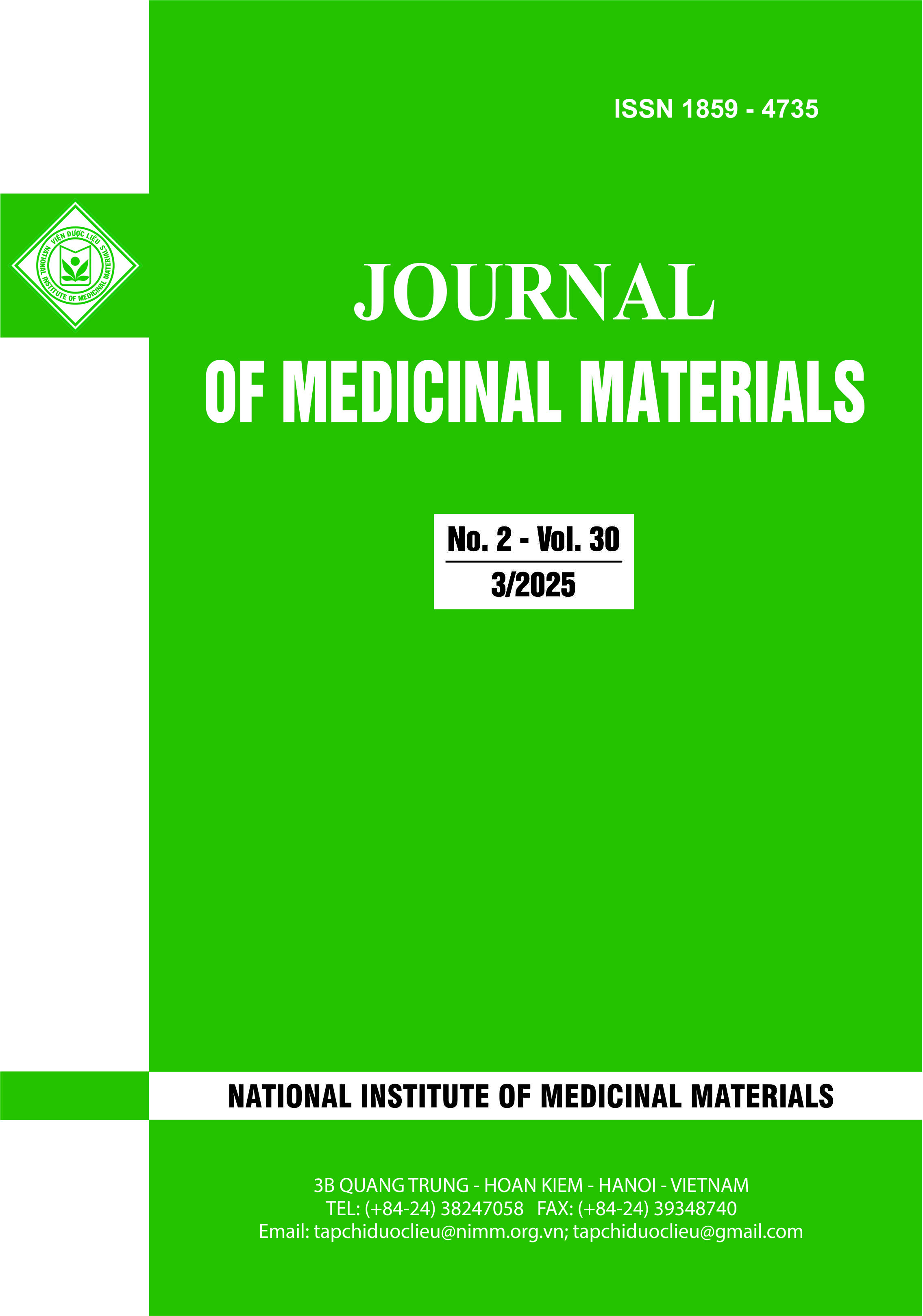
Số lượt xem pdf: 0
Đã Xuất bản
Chuyên mục
Cách trích dẫn
SARCANDRA GLABRA ESSENTIAL OILS: IDENTIFICATION OF CHEMICAL COMPONENTS AND THEIR ANTIMICROBIAL ACTIVITIES USING IN VITRO AND IN SILICO STUDIES
DOI:
https://doi.org/10.63240/jmm-nimm.2025.2.110Từ khóa:
Sarcandra glabra, Essential oil, Antimicrobial activity, Chloranthalactone B, Molecular dockingTóm tắt
Sarcandra glabra is a medicinal plant known for its diverse biological activities, including antimicrobial effects. This study presents the first investigation into the chemical composition and antimicrobial properties of essential oils (EOs) from leaves and fruits of S. glabra collected in Vietnam. GC-MS analysis identified 49 compounds in the leaf EO (97.16% of total composition) and 45 in the fruit EO (96.95%). Chloranthalactone B was a major component in both oils, accounting for 26.04% in the leaf EO and 7.05% in the fruit EO. Other predominant compounds included β-(E)-ocimene (7.49% in leaf, 35.82% in fruit), β-cyclogermacrane (9.29% in leaf), and α-phellandrene (21.67% in fruit). The variation in chemical composition between the two EOs corresponded to differences in their antimicrobial activities. The leaf EO exhibited strong effects, particularly against S. aureus (MIC = 16 µg/mL), while the fruit EO was less effective and showed no inhibition against E. coli and P. aeruginosa. Due to its significant presence in both EOs, chloranthalactone B was further evaluated for its antimicrobial activity, revealing selective effects against S. aureus (MIC = 32 µg/mL), E. faecalis (MIC = 64 µg/mL), and C. albicans (MIC = 64 µg/mL). To further understand its antimicrobial mechanism, molecular docking analysis was performed. The results showed strong interactions between chloranthalactone B and microbial target proteins. Notably, it exhibited high binding affinity with 1IYL (-7.755 kcal/mol) through hydrogen bonding with key residues, as well as effective interactions with 1JIJ (-7.156 kcal/mol) and 2WE5 (-6.412 kcal/mol). These findings suggest that chloranthalactone B plays a key role in the antimicrobial activity of S. glabra EOs and highlights its potential as a natural agent against antibiotic-resistant pathogens.


